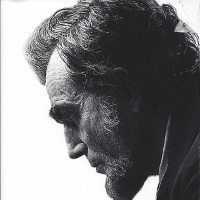You’re in for a treat today. Humphrey Bogart is providing an unforgettable example of relational wisdom. His platform is Casablanca, a movie that has consistently ranked as one of the greatest films of all time.
The movie is set in Morocco, shortly after the beginning of World War II. Bogart plays the role of Rick, a self-absorbed and embittered nightclub owner. A year earlier, he had fallen in love with a beautiful Norwegian refugee named Ilsa (played by Ingrid Bergman), who abandoned him without explanation in Paris, just before the city fell to the Nazis.
Now, out of the blue, Ilsa walks into his nightclub in Casablanca, accompanied by her husband, Victor Laszlo, a renowned fugitive Czech Resistance leader. Like thousands of other refugees fleeing occupied Europe, they are desperately seeking a way to get beyond the reach of the Nazis. When they seek help from Rick, he initially turns them down cold because of his bitterness toward Ilsa.
Ilsa eventually explains to Rick that when they fell in love in Paris, she thought Victor had been killed in a concentration camp. Just before the city fell, however, she had learned that her husband had escaped and was hiding nearby. When she learned he was critically ill, her sense of duty had compelled her to go to his aid. Fearing that Rick would stay in Paris to help her, she had decided to disappear without giving him any explanation.
Once Rick understands the reasons for her disappearance, his bitterness disappears and their love for each other reignites. They craft a plan to stay together, while first saving Victor from the Nazis by flying him out of Casablanca using a special letter of transit.
The following scene is the climax of the movie. Rick and Ilsa have made it to the airport and are about to put Victor onto the plane for Portugal. Emotions have been running high for days. Watch what happens when wisdom intervenes and changes the course of their lives. (If video screen does not appear below, click here.)
Debrief
This brief scene illustrates two powerful relational principles.
First, it portrays the beauty and appeal of personal sacrifice, which is the driving force of the entire movie. At the outset of the movie, most of the main characters—and especially Rick—are driven by self-interest. As the story progresses, however, the characters evolve and each of them begins to make significant personal sacrifices to help others, which is a highly commended value in most cultures.
Rick’s transformation from being self-absorbed to being self-sacrificing is vividly revealed by these words to Ilsa:
“You’re getting on that plane with Victor where you belong ….
“Do you have any idea what you’ve got to look forward to if you stayed here? Nine chances out of ten we’d both end up in a concentration camp.
“Inside of us we both know you belong with Victor. You’re part of his work, the thing that keeps him going. If that plane leaves the ground and you’re not with him, you’ll regret it. Maybe not today, maybe not tomorrow, but soon and for the rest of your life….
“I’ve got a job to do, too, and where I’m going you can’t follow. What I’ve got to do you can’t be any part of…. Someday you’ll understand.
[And the classic closing!] “Here’s looking at you, Kid.”
The second relational concept Rick demonstrates is something I call the READ principle (a simple way to practice self-awareness and self-engagement). Any time you are in a situation where your emotions are threatening to overpower rational thinking, it is wise to READ Yourself Accurately:
- Recognize your emotions
- Evaluate their source
- Anticipate the consequences of following them
- Direct them on a constructive course
Watch and Learn
Watch this short clip again and notice how perfectly Rick illustrates these four actions. The night before, he and Ilsa were overwhelmed by the reigniting of their love for each other. But after she left the nightclub, Rick calmed down and, in his own words, “did a lot of thinking.”
As a result, he was able to see past the intense emotions he felt for Ilsa (fueled primarily by romantic desires) and discern the consequences of following their passions. In addition to anticipating their possible imprisonment, he foresees an even worse life-long consequence:
“If that plane leaves the ground and you’re not with him, you’ll regret it. Maybe not today, maybe not tomorrow, but soon and for the rest of your life….”
This insight applies to so many of the choices we all make when we are driven by unexamined emotions, and especially selfish and sinful emotions. These choices may bring us momentary pleasure, but once that pleasure passes, we are usually haunted by feelings of guilt and regret.
One way to counteract the deceiving and misleading power of sin is to practice the READ principle any time you’re feeling swept along by your emotions.
As you develop the discipline of identifying, evaluating, and directing your emotions in constructive ways, your life will be filled with fewer regrets and you’ll have have the opportunity not only to enjoy stronger relationships but also set an example that can inspire others … just as Rick’s example continues to inspire people decades after Humphrey Bogart passed away.
— Ken Sande
Reflection Questions:
- Describe a time when someone made a significant sacrifice for you, or you made a significant sacrifice for someone else. What resulted from that sacrifice?
- Describe a situation today that gives you the opportunity to make a sacrifice, small or large, for another person. Are you willing to do it?
- Describe a recent situation in which emotions triggered a decision you later regretted.
- Identify a personal or workplace situation in which you may soon have the opportunity to apply the READ acrostic. Prepare in advance by planning how you will carry out each step of the acrostic.
- Write the READ principle on a card or Smartphone reminder and deliberately practice it when you realize your emotions are moving you to act in ways you may later regret.
Permission to distribute: Please feel free to download, print, or electronically share this message in its entirety for non-commercial purposes with as many people as you like.
© 2013 Ken Sande
Get this from a friend? Subscribe now!




